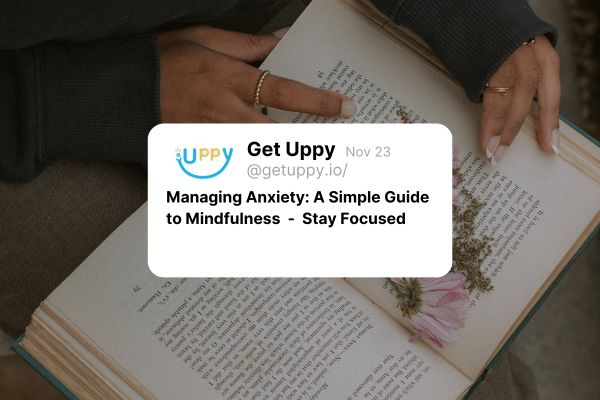Introduction
In today’s fast-paced world, it’s not uncommon for many of us to experience anxiety at some point in our lives. Whether it’s work-related stress, personal relationships, or the constant buzz of everyday life, anxiety can sneak up on us when we least expect it. The good news is that there’s a simple and effective way to manage anxiety: mindfulness.
What is Mindfulness?
Mindfulness is the practice of being present and fully engaged in the current moment. It’s about paying attention to your thoughts and feelings without judgment. In other words, it’s about being aware of what’s happening around you and within you.
How Does Mindfulness Help with Anxiety?
Anxiety often stems from worrying about the future or dwelling on the past. Mindfulness brings you back to the present moment, helping you break free from the cycle of anxious thoughts. By focusing on the here and now, you can reduce the overwhelming feeling of uncertainty and gain a sense of control.
Simple Mindfulness Practices for Anxiety:
1. Deep Breathing: Start by taking slow, deep breaths. Inhale deeply through your nose, allowing your lungs to fill with air, and exhale slowly through your mouth. Focus on the sensation of your breath and let go of any tension with each exhale.
2. Body Scan: Sit or lie down comfortably. Close your eyes and bring your attention to different parts of your body, starting from your toes and moving up to your head. Notice any tension or discomfort, and consciously release it as you go.
3. Observing Thoughts: Instead of getting caught up in your thoughts, take a step back and observe them. Imagine your thoughts as clouds passing by in the sky. Acknowledge them without judgment and let them drift away.
4. Grounding Techniques: Engage your senses to bring yourself back to the present. Notice the feeling of your feet on the ground, the sounds around you, or the temperature of the air. This helps anchor you in the current moment.
5. Mindful Walking: Take a walk and pay attention to each step. Feel the ground beneath your feet, notice the movement of your body, and observe your surroundings. Walking mindfully can be a refreshing way to clear your mind.
Incorporating Mindfulness into Daily Life:
1. Start Small: You don’t need to set aside hours for mindfulness. Begin with just a few minutes each day and gradually increase the duration as you become more comfortable with the practice.
2. Use Reminders: Set alarms or use everyday activities as reminders to be mindful. Whether it’s a notification on your phone or a certain routine, these reminders can prompt you to take a moment for yourself.
3. Stay Consistent: Like any habit, consistency is key. Make mindfulness a regular part of your routine, and you’ll likely notice a positive shift in your overall well-being.
4. Practice Non-Judgment: Remember, mindfulness is about observing without judgment. If your mind wanders or if you find it challenging, that’s okay. Be patient with yourself and gently guide your attention back to the present.
Conclusion
Managing anxiety through mindfulness is a simple yet effective approach that anyone can incorporate into their daily life. By bringing your attention to the present moment, you can reduce the grip of anxious thoughts and cultivate a greater sense of calm and control. So, take a deep breath, embrace the current moment, and begin your journey to a more mindful and anxiety-free life.

